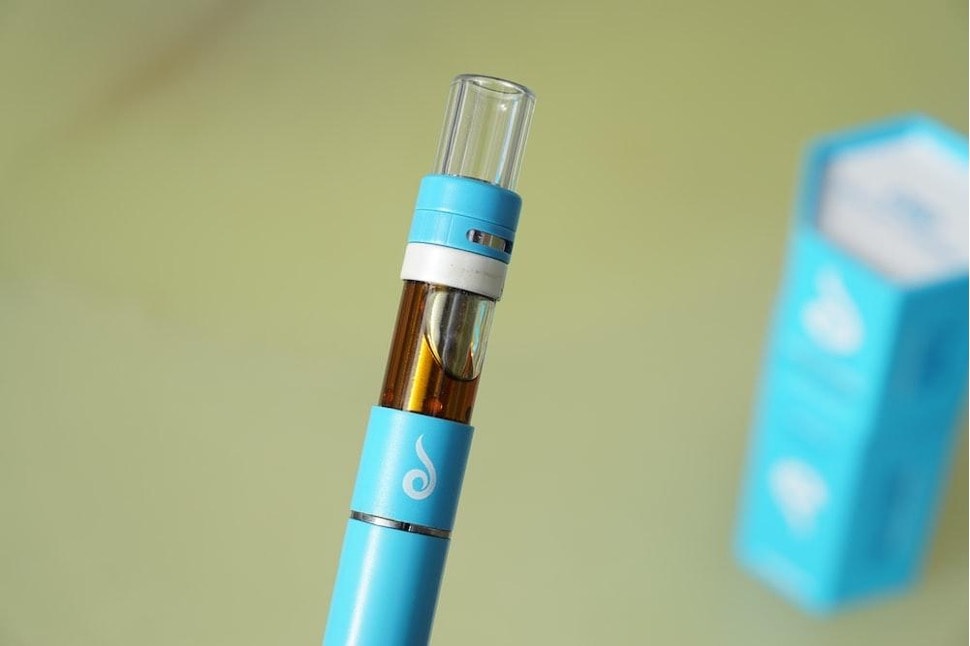Vaping emerged a couple of years ago as an alternative to smoking and won the hearts of millions of users due to the convenience and user-friendliness of new technology. Smokers previously had to carry a pack of cigarettes and a lighter with them, looking for a private place where smoke wouldn’t cause inconvenience to the public. With vaping devices, things have become much easier; you only need to take a sleek, small device out of your pocket and turn it on with one button or a draw. The liquid contained in its tank will quickly evaporate, giving you dense, thick smoke with no hints of bitter tobacco flavor, disseminating in seconds. That’s why vaping devices have given a true revival to smoking routines, with more and more people indulging in vaping in public places, in their cars, at home, and in the office.
But what stands behind vaping? Which technologies made these self-indulgent routines possible? And what mechanism do you really get when buying the best vape pen for CBD oil? Here is a brief introduction to the vaping tech world to keep you informed about what stands behind a quick, flavorful puff.
Also Read: Top 10 Best Fastest Android Browser 2023
A Vaper’s Dictionary
Let’s first clarify what the basic terms in the vaping industry mean. It’s not about becoming a vaping geek but rather about clarifying what a vaping device’s core elements are and how they work.
- E-cigarette, or vaping pen. This device is a vaporizer by essence; it works with the help of a battery that evaporates the e-liquid to mimic the smoking process.
- Flow sensor. This sensor is contained in the vaping pen; it gets activated once the user makes a draw. As a result, a signal is sent to the atomizer to evaporate the e-liquid.
- Aerosol. It’s not pretty correct when you say that you inhale the vapor produced by a vaping device. In technical terms, users inhale the aerosol form of the liquid solution, produced at the temperature of 100-250 degrees Celsius.
Anatomy of a Vaping Pen
Most vaping pens look pretty simple, with no fancy elements or complicated constructions identifiable at first glance. Yet, even a cheap disposable vaping device contains some sophisticated tech inside, letting your e-liquid transition to the aerosol state and reach your lungs. Here are the key components without which one can’t fancy a modern device for vaping:
-
Mouthpiece
- This part of the device is used to make draws and inhale the vapor.
-
Tank/cartridge.
- This is a liquid storage area in which the e-liquid is contained. Vaping devices without refilling possibilities have insulated carts, which makes the manufacturing process cheaper. Refillable devices have more intricate tanks that need to be opened, resealed, and reused multiple times.
- The heating element of vaping devices is an atomizer – the one to which the e-liquid gets to be heated to the temperature at which it turns into an aerosol for inhalation.
-
Microprocessor
- This part of the vaping device is responsible for all activities’ coordination; it ensures the atomizer turns on and e-liquid gets supplied to it when a user presses a button or inhales.
-
Battery
- Most vaping devices operate on simple 510-thread lithium-ion batteries. This is the most widespread and affordable battery type that can allow vaping devices to fulfill their purposes.
-
LED light
- This is an optional element that not every vaping pen has. It’s usually included in the vaping pen’s design to mimic the smoking process and give the user an esthetic feel similar to that of a lit cigarette in the process of vaping.
Notably, the number and appearance of components may differ depending on the device’s type. You can commonly find vaping gadgets shaped like cigarettes, pens, and tanks. Choose the one you like, as they all perform a similar function and only look a bit differently to cater to various users’ tastes and preferences. Besides, the construction may be a bit more complicated in more expensive, rechargeable vaping devices that come with temperature control sensors, adjustment of potency, and smart device connectivity.
Evolution of Vaping Devices
Though the majority of users have discovered vaping only in the past couple of years, the technology is, in fact, much older. The present-day vaping devices represent the latest – fifth – generation of vaping tech.
First-Generation Vapes
The history of first vapes dates back to the 1920s-1930s, when the first “cigalike” devices were invented, and the use of these devices was revived in 2003. These devices contained a cartridge, an atomizer, and a battery, so the principle of their work was pretty much identical to what we know as modern vaping. Those devices used a lower voltage of 3.7V and were equipped with USB chargers for recharging.
Second-Generation Vapes
After a decade of successful use of first-generation vapes, the second generation of vaping technology entered the market in 2013. The main difference from its predecessor was the separation of a tank and a battery. These new devices used a higher voltage, but their batteries couldn’t be removed from the device. The same method of USB charging was used to recharge these vaping pens, and a LED indicator showed the battery’s potential. This generation of vaping tech could run on 3V and 6V batteries, with some devices even offering voltage customization features.
Third-Generation Vapes
The third-generation vaping technology also emerged in 2013; these devices differed from the previous ones with variable voltage and mechanical battery segments called “mods.” The latter come without integrated circuits, which makes manufacturing less demanding and costly. The benefits of this generation’s devices included larger tank capacity, better battery performance, removable batteries, and compatibility between atomizer types.
Fourth-Generation Vapes
The fourth generation of vaping tech ushered humanity’s desire to distance itself from harmful plastic over-consumption. Thus, these devices became available in the USA in 2014, made of steel and Pyrex glass. The devices were equipped with a smart temperature control feature and utilized sub-ohm tanks. Which allowed expert vapers to take large-volume, deep e-liquid puffs.
Fifth-Generation Vapes
The present-day vapes are fifth-generation devices that have acquired immense popularity worldwide in 2021-2022. They have become disposable, with advanced technology allowing them to produce vaping pens for one-time use without considerable quality compromises. The novelty was received positively in the consumer market, as such vaping devices cost little and give young people greater flexibility in brand and flavor experimentation. However, they have attracted much criticism in terms of starting a new wave of toxic environmental pollution with cheap lithium-ion batteries and plastic.
Science Behind the Vaping e-Liquid
Now, a couple of words about the technology of e-liquid production. What does this liquid contain to give the pleasurable vaping experience and mimic smoking? The core ingredients you will typically find in any vaping juice are:
- Propylene glycol
- Glycerin
- Flavorings (containing eucalyptol, camphor, ethyl salicylate, menthol, and pyrazines)
- Nicotine
- Sugars (additives that provide a sweet flavor)
A note of caution: vaping is a relatively new industry in many states, so e-liquid composition is largely non-regulated. Thus, it’s your responsibility to check the labeling and determine what your e-liquid contains. Don’t forget that poor-quality e-liquids with hazardous chemical additives can cause lung damage. So it’s better to opt only for top-quality producers with safe, transparent ingredients.
Final Word
As you can see, vaping has advanced considerably over the past century. With the largest share of innovations observed in the past couple of decades. Vaping devices are getting immensely popular among users today, which in part explains the quick tech progress with vaping devices. Therefore, you should know the basics of their work to enjoy a safe, rewarding user experience. The best solution is to stick to high-quality devices with a low environmental footprint.
The author of this article is Denys Svirepchuk, a blogger at AskGrowers and a cannabis researcher fascinated about CBD technology. Denys knows everything about vaping and shares his insights and knowledge. With the audience to help people make sense of the products they choose and the procedure of safe, responsible CBD vaping.


